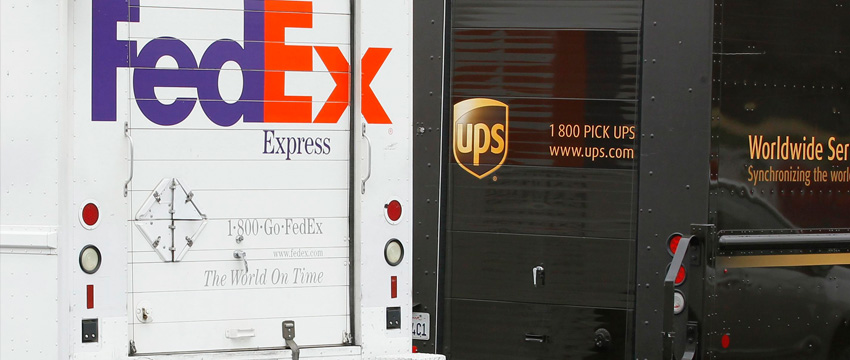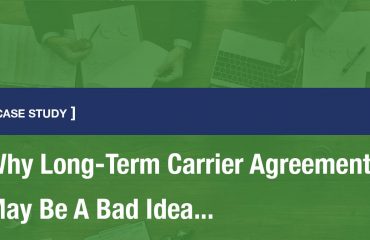How to Effectively Control Your UPS and FedEx Costs
In order to effectively manage and reduce costs with UPS and FedEx, one needs time. Between analyzing one’s shipment profile, developing a strategy, preparing an RFP, and negotiating with the carriers, implementing an A+ agreement with UPS and FedEx often requires several months of preparation and execution. If operational changes are required, it can take even longer.
Data is king!!! Before you prepare to tackle any negotiations, it is critical to gain visibility to your data. Having detailed knowledge of your shipment data will provide the basis for any negotiations with the carriers, help assess packaging (dimensional weight) issues, as well as identify areas where simple fixes can be made. The following are some steps to take now, which can lead to significant savings, especially with the changes to dimensional weight practices in January 2015.
OPERATIONAL CHANGES
A common issue that shippers identify once they have visibility is that they are significantly overpaying for unexpected charges. Unexpected charges most often derive from one or more of the following; shipping charge corrections, late payment fees (six percent with UPS), declared value (often generated by a vendor), Next Day Air AM or other “time sensitive” charges, address corrections, and from services that aren’t receiving the anticipated (or any) discounts. By gaining visibility to any of these items, organizations can develop internal processes to move less time sensitive shipments to the appropriate service levels, implement solutions to eliminate incorrect charges, change accounting practices, and implement shipping procedures with its vendors.
PACKAGING AND THE IMPACT OF DIMENSIONAL WEIGHT
Data will also provide the details needed to identify necessary improvements to address any dimensional weight issues. That can typically either be managed by changing box sizes (depending on the commodities and service levels) or by negotiating the necessary changes with the carrier(s). Note that UPS and FedEx discontinued the benefit of the 5,184 cubic inch dimensional weight tolerance for Ground and HD shipments in January 2015, so in those cases, the actual weight is only considered when determining the billable weight if it’s greater than the dimensional weight. Keep in mind that the carriers typically run out of space before they exceed weight requirements, so whenever a dimensional weight issue can be addressed through internal changes, that’s ideal. This then improves a shipper’s position to negotiate other items in the agreement rather than focusing on the dimensional weight factor or cubic foot threshold.
DISCOUNTS
The most apparent opportunity for containing costs often lies within the rates themselves. All too often, we find that a shipper’s agreement has expired or the revenue spend has changed so that the anticipated earned discount tier is not being met. The solution may be as simple as having the tier adjusted and reset or you may want to negotiate new discounts that’s based on the current shipment profile and spend.
Options exist to hire a third party to assist with negotiations, or simply provide pricing targets based on your shipment characteristics. Gaining visibility to the pricing that’s appropriate based on various characteristics is an absolute necessity, in order to have success in negotiating with UPS and FedEx. After all, the devil is in the details.
ACCESSORIAL CHARGES
Identify which accessorial charges have the most significant impact on your costs. Keep in mind that most accessorial charges are negotiable, so review those with the carrier. Fuel surcharges are also a key component of your accessorial charges. It will typically account for five to 10% of the transportation cost, or more, depending on the percentage in the fuel index in effect at the time of the shipment, as well as the fees that are being impacted by the fuel surcharge. Many are not aware that the fuel surcharge not only applies as a percentage of your base rate, but also to select fees, including the following:
• Residential Delivery Charges
• Delivery Charges
• Pickup Charges
• Return Services Charges
• A.M. Charges
• International Extended Area Charges
• Saturday Delivery and Pickup
• Large Package Surcharge
Although the typical mid-market shipper won’t have the leverage to negotiate a reduction or a cap to the fuel surcharge, the rates and select accessorial charges that are impacted by the fuel surcharge can be reduced, which effectively reduces the fuel surcharge.
Whether you prioritize your logistics needs on any combination of convenience, reliability, on time performance, controlling damages, or any other criteria, we all want to work with a reliable carrier that meets our service expectations. Although FedEx and UPS justify their rates and increases by claiming to protect margins and yield, they are still, in the end run, competing for your business. As a result, there remains pricing flexibility from the carriers consistent with what we have seen in the past.
Contact ParcelLogix today to learn how our team of experts can assist you with managing your UPS and FedEx contract negotiations. ParcelLogix provides small parcel shippers with the most robust solutions at prices that are often 95% to 98% less than our competition. We specialize in providing the following:
• Business intelligence and cost-reduction solutions they need to better manage their transportation expenses.
• Data gathering, analysis, and benchmarking tools
• Proprietary software and intelligence that applies our extensive carrier pricing expertise to identify areas where you can reduce shipping costs.
• Non-intrusive strategies to help companies have effective negotiations with UPS®, FedEx®, & DHL Express®.



